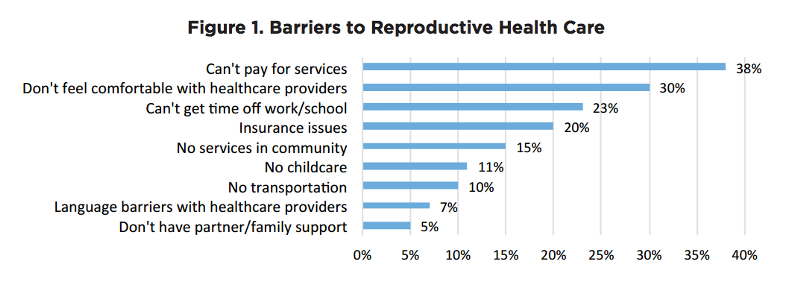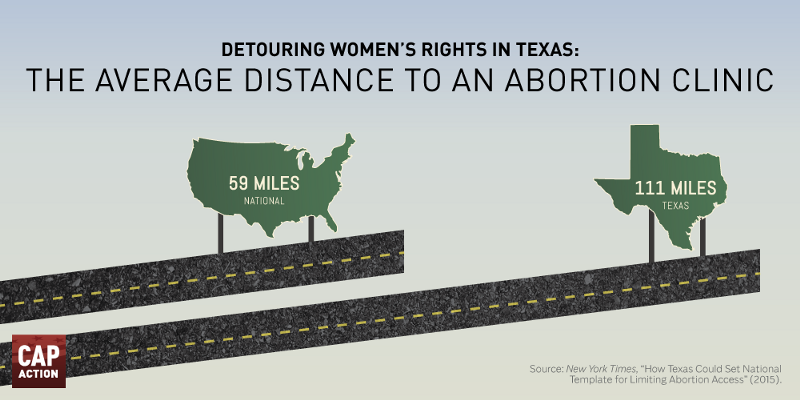Access to comprehensive, affordable, reproductive health care is a critical part of economic stability for women and families across the United States. But in Texas, women are struggling to access basic health care services.
In 2015, more than half of Texas women reported barriers to accessing care, including cancer screenings and family planning services after the Texas legislature excluded Planned Parenthood from the Medicaid program and cut ties with all clinics that offered abortion services.
 SOURCE: Texas Policy Evaluation Project
SOURCE: Texas Policy Evaluation Project
All of the GOP presidential candidates support Texas’ restrictive abortion measures, including Ohio governor John Kasich who signed a bill effectively defunding Planned Parenthood by redirecting state-administered grants away from groups that “promote abortion.” Under Kasich’s watch, Ohio has passed 17 restrictions on women’s health and closed nearly half the abortion providers in the state.
In the coming months, the Supreme Court will consider a case challenging the omnibus anti-abortion law that forced 75% of abortion providers in Texas to close. Should the Court find that Texas’ abortion restrictions don’t place an “undue burden” on women’s right to choose, states will have the legal cover to enact the same kind of onerous measures all over the country.
Quick Facts: Women’s Health
- After Texas severely cut public funding for family planning programs, including Planned Parenthood, in 2013, claims for long-acting reversible contraceptives, such as the highly effective IUD, declined by 35%. Between 100,000 and 240,000 Texan women attempted to self-terminate a pregnancy. TWEET
- 95% of women with unintended pregnancies in the two years after having a child had an unmet need for implants, IUDs, or sterilization. TWEET
- The average Texas county is now 111 miles from the nearest abortion provider — the national average is 59 miles. TWEET
 Share On Twitter || Share On Facebook
Share On Twitter || Share On Facebook
- Only 23 of the 254 counties in Texas had a Planned Parenthood clinic before 2013, but they served 60% of the state’s low-income women of childbearing age. TWEET
- 1 in 3 Texas women of childbearing age lack health insurance, more than any other state. TWEET
- Latinos in Texas are more than twice as likely as whites to be uninsured. TWEET
Targeting clinics and defunding Planned Parenthood severely limits access to comprehensive health care for low-income families, which in turn leads to further economic barriers. Women are forced to travel across the state, or out-of-state to access abortion care, straining their family budgets. For families that are already raising children, the lack of guaranteed paid leave, fair wages for women, and access to high quality, affordable child care makes Texas a hard place to stay afloat.
Quick Facts: Women’s Economic Security
- Women earn only 77.8 cents for every dollar that men earn, and make up 60% of minimum wage earners in TX. TWEET
- In TX, black women earn only 58.7 cents and Latinas earn only 44.2 cents compared to white men. TWEET
- The average cost of child care for a Texas family with one infant and one 4-year-old is $15,489, more than one fourth of the median family income. TWEET
- 59% of Texas children under age 6 have all available parents in the workforce. TWEET
- 44.9% of workers in Texas do not have access to paid sick days, far more than the national rate. TWEET